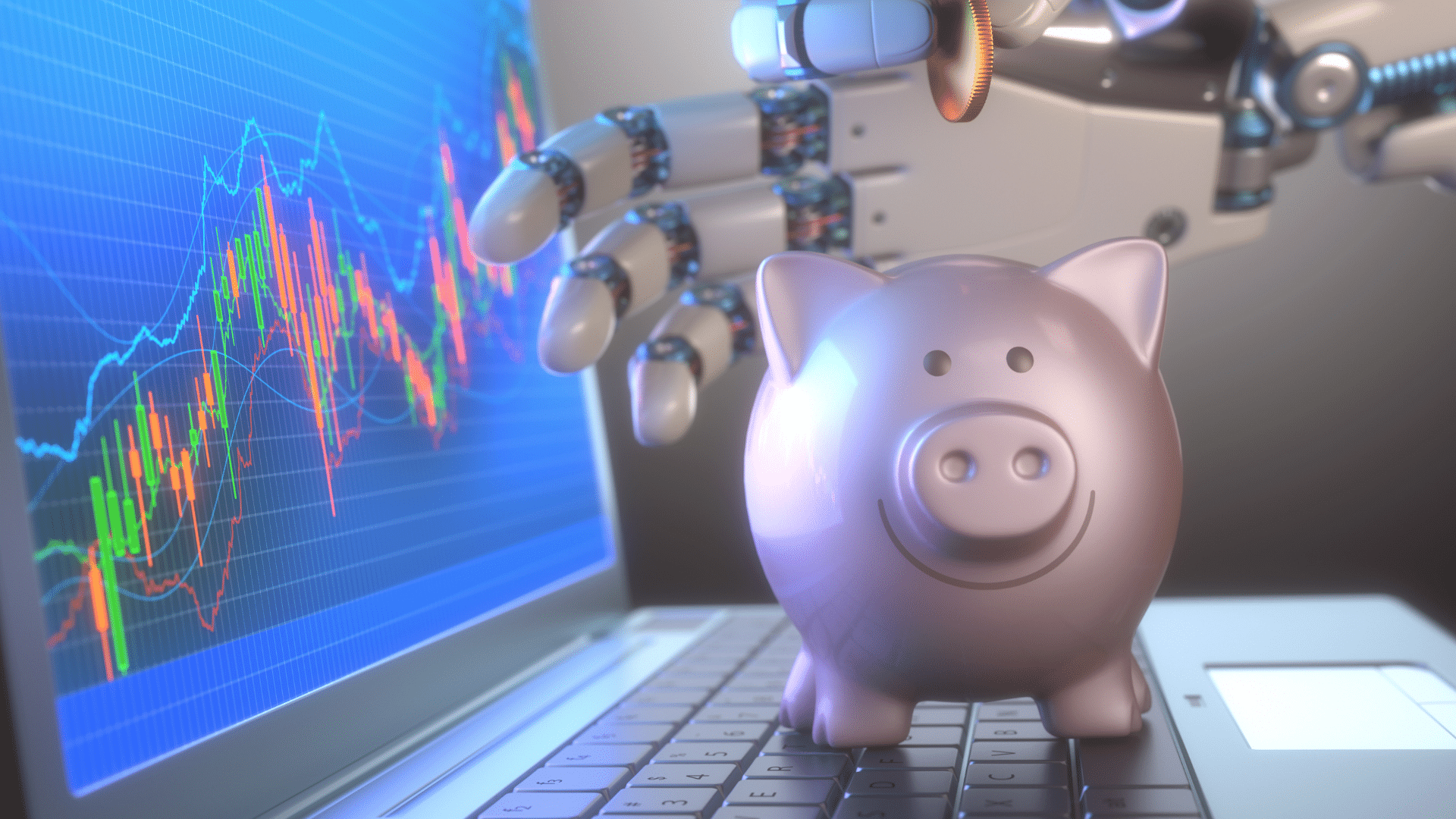It is no surprise that when the general public thinks of trading in the financial markets, they imagine rows upon rows of computers with access to Bloomberg terminals and a series of traders in suits analyzing ungodly amounts of data whilst making split-second decisions with millions of dollars at stake.
Imagine the disappointment on their faces when they find out that the bulk of trading on the financial markets is done by a complex bit of software known as an algorithm. In fact, it is estimated that as much as 70% of US equity trading is done using these algorithms.
The days of the stockbroker are long gone and what remains is a very sophisticated computerized system designed specifically to do one thing: make money.
NOTE: You can get your mechanical trading systems PDF below.
What are Mechanical Trading Systems?
Mechanical trading systems, otherwise known as automated trading systems, are software programs with specific protocols implemented within them that are designed to buy and sell securities on the market when specific parameters are met.
With the ability to design these systems, traders can now essentially automate their trading and allow computers to execute their trades for them in whatever manner they wish these computers to operate.
The protocols that govern these trading systems can be as simplistic or sophisticated as the trader who designed them wants them to be.
They can be based on simple conditions, such as a specific reading from a particular indicator. Or, they can be far more sophisticated and arranged around particular strategies and trading techniques designed exclusively for trading one particular security.
Mechanical trading systems typically require the trader to have access to software linked to what is known as a direct access broker.

Direct access brokers are usually concerned with speed and efficient order execution. They are specialist brokers that allow traders to use these mechanical trading systems and trade directly with an exchange instead of through a third party.
As you might imagine, these mechanical trading systems come with a range of benefits over manual trading. One of the main benefits is that it takes the emotion out of trading and mathematically executes the trades.
Human psychology is one of the biggest reasons for failure when trading the financial markets. Humans are prone to panic, fear, and greed. These emotional responses cloud our judgment and hinder our decision-making abilities. With a mechanical trading system, this emotional-based decision-making problem is solved.
These automated trading systems also have an advantage over manual trading in terms of the efficiency of their order execution.
Computers will always have a faster reaction time and can enter and exit trades more efficiently than humans. These increased efficiencies could translate into larger profits and smaller losses over large periods.
Whilst these automated systems have several very significant advantages, they are not without their failings.
Since these systems are based on technology, they are subject to the same limitations as any other type of technology.
A power cut, loss of internet connection, or technical failing could prevent the software from operating correctly. These limitations mean that traders will need to remain on-hand to monitor the software and ensure everything runs smoothly.
Unfortunately, the software is far from a “set it and forget it” type of solution that will allow you to make passive income while sitting on a beach in the Bahamas.
NOTE: You can get the best free charts and broker for these strategies here.
Mechanical Forex Trading Strategies
As Forex software becomes more advanced, automated trading will become increasingly common, with many traders already utilizing mechanical forex trading software.
Whilst there are several mechanical forex trading strategies, for this post, we will focus on one particular strategy that adopts a trend following approach in the Forex market.
Below you will find the two signals and six applicable rules for this strategy.
| Long Signal | Short Signal |
| Open a long trade if the open price on the currency pair is larger than the open price X days ago. | Open a short trade if the open price on the currency pair is lower than the open price X days ago. |
| Rules |
| If there are no trades open and a long signal presents itself, then enter a long trade. |
| If there are no trades open and a short signal presents itself, then enter a short trade. |
| When a new trade is entered, place a stop-loss order X% of the ATR-20 away from the current entry price. |
| Lot sizes of new open trades are calculated such that the loss at a touch of the stop-loss is 1%. |
| If there is an open trade in one direction and a signal is received in the same direction, move the stop-loss order as if a new trade had just been opened at the current open price. |
| If there is an open trade and a signal is received in the opposite direction, then close the current trade and open a new trade in the same direction as the new signal. |
As you can see, the strategy above is straightforward and operates with only two signals and just over a handful of rules to guide it.
You will notice that the rules only allow for the system to have a one-directional trade open at any point.
The rules also allow for the stop-loss on these trades to be continuously updated, essentially acting as a trailing stop-loss but without the need for you to redefine any additional parameters.
Thanks to the strict rules this strategy adopts, the strategy requires minimal modifications whilst remaining robust enough to operate profitably over time.
Mechanical Stock Trading Systems
Mechanical trading systems are not exclusive to any specific asset. They can be used in forex, cryptocurrencies, and even stocks.
When trading in the financial markets, emotional responses and decisions founded on a trader’s emotions are the biggest cause of losses. Since these trading systems are designed to exclude emotions from the trading experience, you can certainly see their appeal.
Let’s examine some of the steps you need to take to implement a mechanical trading system when trading stocks.
The first step will be to identify what timeframe you wish to trade in. Some traders prefer the 30-minute chart while others prefer hourly. This is a personal decision, and you will need to make this decision based on your own trading preferences.
Once you have selected a timeframe within which to trade, you need to select the indicators you will apply to inform your system’s decision-making.
Moving averages are a prevalent indicator for traders who wait for a crossover between two moving averages to signal an entry position.
Whatever indicator you choose to use, make sure you are not only operating with one indicator. Your system must be reliant on information from at least two indicators.
Popular indicators that can be used in conjunction with moving averages are the RSI or MACD.
With your timeframes and indicators ready, the next step is to identify your risk tolerance.
Mechanical trading systems are not infallible, and your capital is still at risk when using these systems. Ensure that you set your stop-loss orders to account for the amount of capital you are comfortable with losing.
As a general rule, your stop-loss order should be a maximum of 5% of your total position, and your take profit target should be twice the amount of risk you take on. For example, if your stop-loss is at -3%, your take profit should be at 6%.
Once all these steps have been followed, the final step will be to set your entry and exit points using certain rules based on the indicators and stoploss/take profit orders you have set prior.
There are several methodologies and theories available to help you set these entry and exit points.
Below we will look at what these rules might look like in practice when entering or exiting a trade.
| Entry Point | Exit Point |
| Enter a buy position if the 5-day moving average is above the 10-day simple moving average and the stochastic lines are moving up. Only enter the trade if the RSI is greater than 50. | Enter a sell position when the 5-day moving average falls below the 10-day moving average. The stochastic lines should be moving down. Only enter the sell position if the RSI is less than 50. |
The above two rules are just examples, and you should change them to suit your own specific indicators and trading styles.
Best Automated Trading Software
There are a host of different providers from whom you can download and access automated trading software.
Some of these providers will naturally be better than others, but there are five things you should look out for when determining which one to use.
- Preferred markets – No single piece of software has access to every market, so ensure that the software you select can trade in the markets you wish to access.
- Reduced latency – You should ensure that the software you are using reduces latency as much as possible. You should be receiving the same access to the market that a floor trader at the exchange has.
- Well-designed interface – Since these software systems still need to be monitored, you should ensure that the interface you are using is functional and configurable to your specific preferences.
- Industry-standard programming language – The most sophisticated strategies will require you to program the software yourself. You will need an industry-standard programming language to do this.
- Detailed price histories for backtesting – Your software should have access to detailed backtesting across multiple timeframes.
Based on the above 5 criteria for selecting automated trading software, MetaTrader 4 appears to offer the best overall service. This is a popular Forex trading platform that can be integrated into almost any brokerage account without requiring you to open any new accounts.
However, if you are not looking to trade currencies, then MetaTrader4 will not be of much use to you. If you are looking to trade other assets using automated trading software, you may consider using Interactive Brokers.
Lastly
Whilst some of these trading systems can be incredibly sophisticated, you should remember that these systems are not the magic of the Gods and that they are fallible.
It is next to impossible for a mechanical system to endure forever.
Any mechanical design or creation is still subject to the law of entropy and therefore must and will break down at some point in time.
It will be critical that you continue to monitor your software throughout its operation and make adjustments over time when the software fails to perform at the desired level.
NOTE: You can get your mechanical trading systems PDF below.

Dylan is both a trained lawyer and an experienced financial content writer from the United Kingdom . He specializes in writing about the US markets and has developed a keen interest in cryptocurrencies and decentralized finance.
